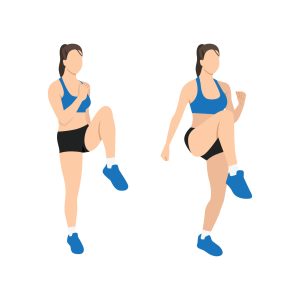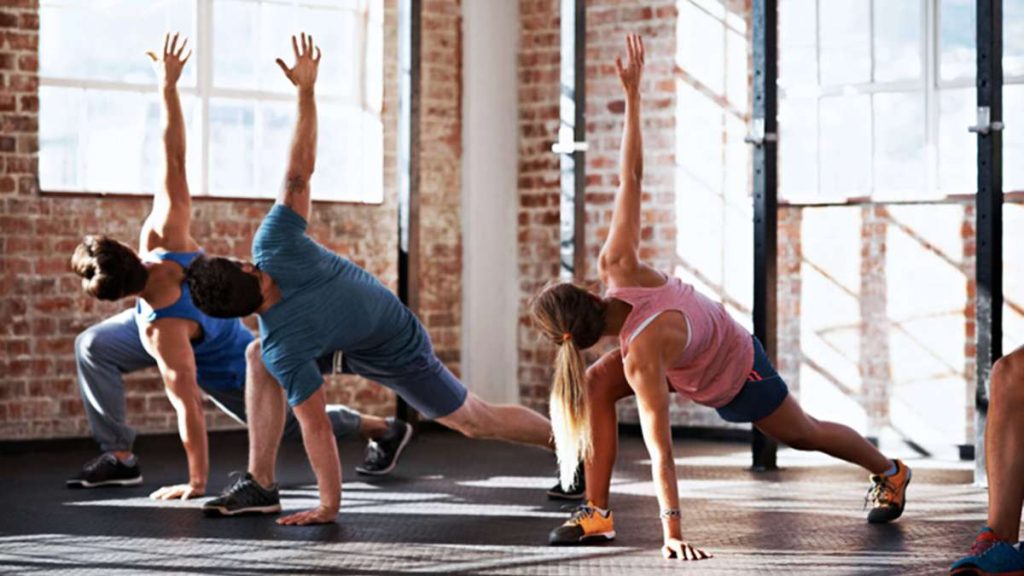Best Warm-up Exercises that You Should Do Before Doing High-Impact Sports
A proper warm-up routine is important for anyone who wants to participate in high-impact sports. Warm-up exercises should prepare the body for the physical activity that is about to take place and help minimise the likelihood of sports injury.
There are several warm-up exercises, but choosing the right ones for your specific sport and activity level is vital.
Here Are the Best Warm-up Exercises to Do Before High-Impact Sports

1) Leg Swings: Side to Side
Swing one leg back and forth in a controlled manner. Make sure to keep your core tight to help keep your spine straight. This exercise improves flexibility and mobility in the hips and spine.
2) Leg Swings: Front to Back
They are also an excellent way to work on your balance and coordination. To do a front-to-back leg swing, swing one leg in front of the back (pendulum), keeping your core tight to keep the spine straight.
Swing only as far back as you can without arching back.
Keeping your core tight when doing leg swings is critical, so you don’t hurt your back. Swing your leg to the front and then swing back as far as possible without arching your back and standing tall.
3) Lunge with Rotation
When you make a lunge with rotation, you only want the upper body to rotate towards the lunging leg – don’t let the knees or feet shift as you move. This will help keep your balance and alignment during the movement. Lunge with rotation will warm up your core and leg muscles.
4) Lateral Band Walks
The lateral band walks warm-up and strengthens the glutes and hips. It might also help with hip and back pain as well. Place the band lower on the leg to increase the challenge of lateral band walks. This will make it more difficult to walk laterally. Remember to keep your core tight and shoulders back to avoid rocking side to side as you step.
5) Walking Knee Hug
Walking knee hugs will improve the hip and hamstrings flexibility. This is a standard warm-up exercise you can do before high-intensity sports or workouts. Knee hugs also work on hip flexor muscles and abs.

6) High Knees
High knees are a great way to increase your heart rate and warm up your muscles before beginning more complex movements. It’s a quick, 2-3 minute burst of activity that can help you get ready for your workout.
High knees work on your quadriceps, hamstrings, and calves. High knees will improve your balance, coordination, and endurance.
7) Arm Circles
To begin your workout, warm up first. Arm circles are great ways to start your exercise. They can help prevent injury and get you ready to push yourself. Here are our favourite arm circle exercises to get you started!
8) Trunk Rotations
The trunk twist is a great exercise to warm up the core muscles. It also stretches the spine, back, and chest muscles. Athletes warm up their core muscles with this exercise before training.
9) Sprinting
Sprinting is a great way to improve your running speed and explosiveness. In this workout, you will sprint for 10-20 meters three times, with a short break between each sprint. Make sure to walk back to the start after each sprint to prepare for the next one!
10) Respiratory System Warm-up
Oxygen is an essential nutrient for athletic performance. Breathing training fatigues respiratory muscles and should be done after your performance when you’re already tired.
11) Benefits of Warm-ups
Warm-up is an essential part of any workout routine, especially if you are doing high-impact sports. It helps increase performance and prevents injuries. There are a variety of exercises you can do to warm up properly before your workout.
There are two types of warm-ups- active and passive. Active warm-ups are when you do some light exercise before your main activity. This could be something like jogging, cycling, or jumping rope. Passive warm-ups involve using external sources to warm your body, such as a heating pad or a hot bath. The intensity of a warm-up can depend on the activity accomplished.
For example, if you’re playing a sport involving running, you must do a more active warm-up. A passive warm-up would be fine if you’re doing a less strenuous activity like pilates. Working out without a proper warm-up can be dangerous, as you might injure yourself due to the sudden increase in activity. A good warm-up will increase blood flow and flexibility, preparing your body for more strenuous exercises. In addition to the many benefits of warming up before a workout, you can also enhance your endurance. By preparing your muscles for an intense workout, you’ll be better equipped to handle the demands of high-impact sports. Furthermore, warm-ups help prevent injuries by stretching the various muscles in your body. This is especially significant if you’re engaging in a high-impact sport because it can help reduce the risk of injuring yourself.
Dynamic vs Static Warm-ups
Dynamic warm-ups are a type of warm-up that has replaced static warm-ups in recent years. They produce better performance scores than static warm-ups across multiple exercise testing scenarios. This is likely dynamic warm-ups activate more muscles and move your body, to prepare you for the activity you are about to do.
However, many athletes prefer a static warm-up or stretch after a high-intensity sport.
Dynamic warm-ups are becoming increasingly popular as athletes realise the importance of warming up muscles in a way that simulates the demands of the sport.
A dynamic warm-up consists of exercises that increase in intensity gradually, allowing the body to adjust to the increasing demands slowly. This is opposed to static stretching, which can reduce performance.
How Long Should a Warm-up Take?
A typical warm-up should take around 5-10 minutes only. But it can be longer as well. For example, runners would run 1-2 miles for prelude only.
Conclusion
The key reason for warm-up exercises before sports is they can reduce your chance of injury.
At the minimum, you should try various aerobic exercises, such as brisk walking, biking, running, and jumping jacks. Perform stretching through training and cool-down exercises to release tensions and promote flexibility.
With just 5-10 minutes of warm-up, you can avoid injuries and be ready for the high-impact sport.
Buy Quality Women’s Protective Gear From Fempro Armour Today
If you’re a female athlete, then don’t settle for using men’s or unisex protective gear. Instead, get the protective gear that you deserve. Here at Fempro Armour, we specialise in offering body armour that has been specifically designed with female anatomy and requirements in mind. We’re proud to stock a wide range of top-quality body armour for women athletes, ensuring that you can compete with full peace of mind that you’re as protected and as comfortable as possible. Checkout our range of protective gear, by clicking HERE

